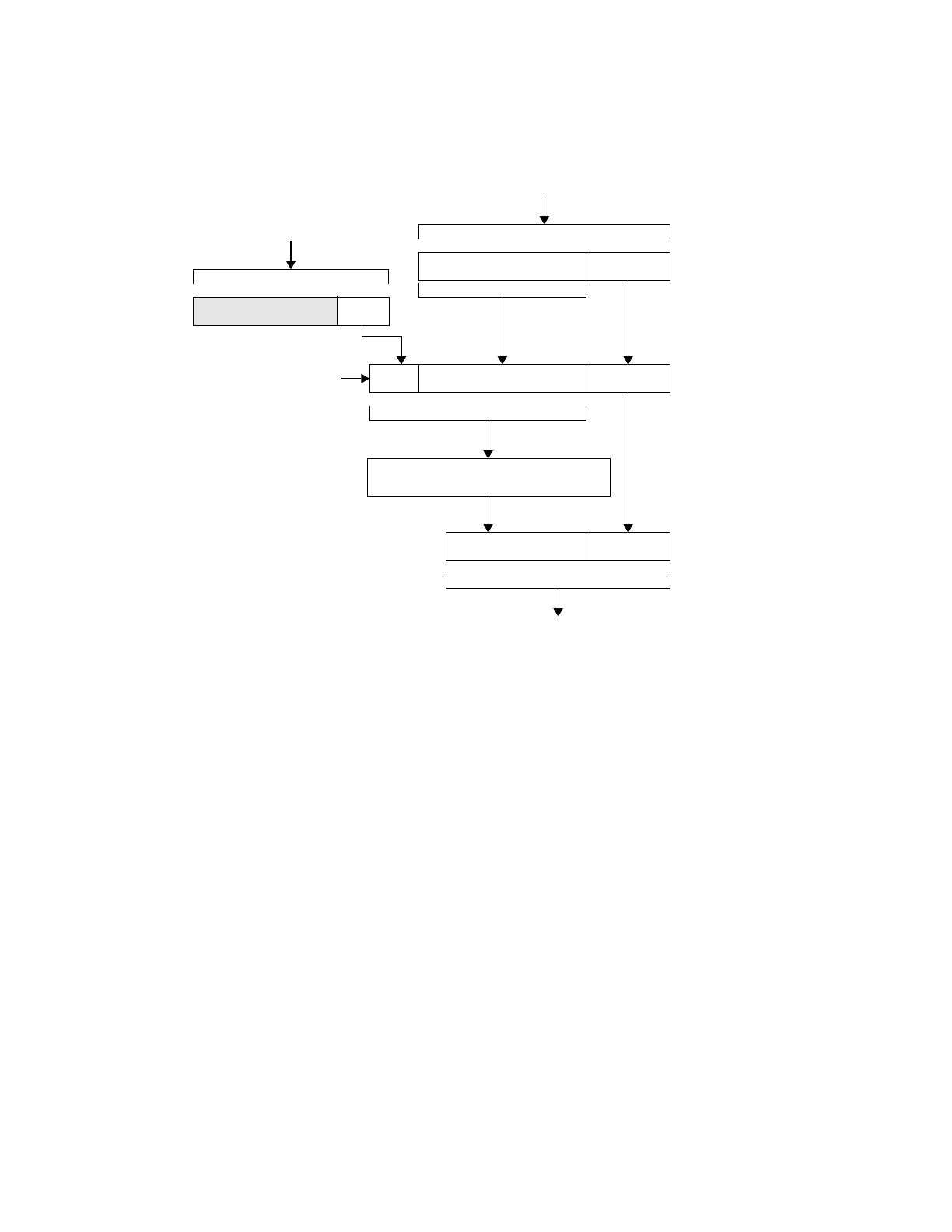
7-2 PPC405 Core User’s Manual
In address translation, the EA is combined with an 8-bit process ID (PID) to create a 40-bit virtual
address. The virtual address is compared to all of the TLB entries. A matching entry supplies the real
address for the storage reference. Figure 7-1 illustrates the process.
7.3 Translation Lookaside Buffer (TLB)
The TLB is hardware that controls translation, protection, and storage attributes. The instruction and
data units share a unified fully-associative TLB, in which any page entry (TLB entry) can be placed
anywhere in the TLB. TLB entries are maintained under program control. System software
determines the TLB entry replacement strategy and the format and use of page state information. A
TLB entry contains the information required to identify the page, to specify translation and protection
controls, and to specify the storage attributes.
7.3.1 Unified TLB
The unified TLB (UTLB) contains 64 entries; each has a TLBHI (tag) portion and a TLBLO (data)
portion, as described in Figure 7-2 on page 7-3. TLBHI contains 36 bits; TLBLO contains 32 bits.
When translation is enabled, the UTLB tag portion compares some or all of EA
0:21
with some or all of
the effective page number EPN
0:21
, based on the size bits SIZE
0:2
. All 64 entries are simultaneously
checked for a match. If an entry matches, the corresponding data portion of the UTLB provides the
[0:
n
–1] [
n
:31]
OffsetEffective Page Address
[0:7]
PID
Effective Page Address OffsetPID
32-bit EA
Unified TLB
64-entry Fully-associative Array
OffsetReal Page Number
32-bit Real Address
[8:
n
+7]
[0:
n
–1] [
n
:31]
[
n
+8:39]
[24:31][0:23]
40-bit Virtual Address
Note:
n
is determined by page size. See
Table 7-1 on page 7-4.
PID Register
Figure 7-1. Effective to Real Address Translation Flow


















